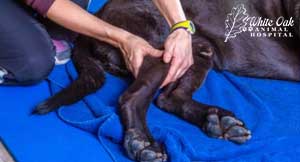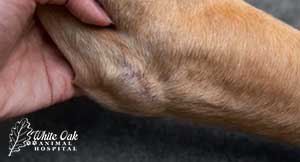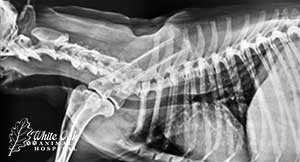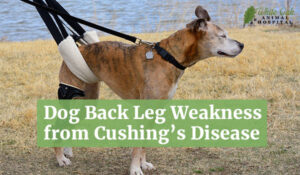
A dog limping on the back leg is a concerning and prevalent issue among pet owners. Often attributed to various underlying causes, this phenomenon can severely impact a dog’s quality of life, necessitating immediate attention. The importance of addressing a dog limping on the back leg lies in its potential to signal various health issues that require timely intervention.
When a dog starts limping on a back leg, it is a red flag that something may be amiss within its musculoskeletal system. Whether it’s due to arthritis, injuries, infections, or other issues, this symptom should not be ignored. Neglecting a limping dog can lead to exacerbated pain, prolonged suffering, and complications that might necessitate more invasive treatments later on.
Common Causes of Dog Limping on the Back Leg
As dog lovers and responsible pet owners, our furry companions depend on us for their well-being. One of the distressing signs that can signal an underlying health issue is when you see your dog limping on the back legs. This worrisome symptom can have a range of causes, from minor injuries to severe medical conditions, and it’s our responsibility to understand and address it promptly.
Arthritis and Joint Problems
 Arthritis typically arises from the wear and tear that naturally occurs over time, especially in older dogs. It can also develop due to genetic predispositions, obesity, or previous injuries. When a dog suffers from arthritis or joint problems, their back legs often bear the brunt of the discomfort.
Arthritis typically arises from the wear and tear that naturally occurs over time, especially in older dogs. It can also develop due to genetic predispositions, obesity, or previous injuries. When a dog suffers from arthritis or joint problems, their back legs often bear the brunt of the discomfort.
Symptoms of arthritis in dogs may include stiffness, reluctance to engage in physical activities, and an altered gait. They might also display signs of pain when touched around the affected joints. In some cases, these symptoms can escalate to the point where we can observe the dog limping on the back leg to alleviate the pain and discomfort.
Injuries and Trauma
 Like humans, dogs are susceptible to accidents that can lead to various injuries, including sprains and fractures, ultimately resulting in the dog limping on the back leg. Injuries in dogs can occur during play, exercise, or even accidents around the house. A typical scenario is a dog taking a misstep, slipping on a slippery surface, or colliding with an object, leading to strain or injury to the hind limbs.
Like humans, dogs are susceptible to accidents that can lead to various injuries, including sprains and fractures, ultimately resulting in the dog limping on the back leg. Injuries in dogs can occur during play, exercise, or even accidents around the house. A typical scenario is a dog taking a misstep, slipping on a slippery surface, or colliding with an object, leading to strain or injury to the hind limbs.
When a dog sustains such an injury, there are specific signs to watch out for. Typically, you might notice sudden lameness in one of their back legs. They may also exhibit pain when putting weight on the affected limb or display sensitivity when the injured area is touched. In some cases, there could be visible swelling or deformity near the injured site.
Infections and Inflammation
 Infections, such as Lyme disease and cellulitis, can indeed lead to this distressing symptom in our beloved canine companions. Lyme disease, transmitted through tick bites, is one notable infection that can affect a dog’s joints, leading to inflammation and lameness. Cellulitis, on the other hand, is a bacterial skin infection that can spread and cause inflammation in the affected limb.
Infections, such as Lyme disease and cellulitis, can indeed lead to this distressing symptom in our beloved canine companions. Lyme disease, transmitted through tick bites, is one notable infection that can affect a dog’s joints, leading to inflammation and lameness. Cellulitis, on the other hand, is a bacterial skin infection that can spread and cause inflammation in the affected limb.
When a dog is grappling with infections like these, there are specific signs to be vigilant about. Dog limping on the back leg or lameness is a common manifestation. You might also observe swelling, redness, or warmth in the affected area. Dogs with infections might exhibit pain or discomfort when the infected limb is touched, and they could display a general sense of malaise.
Recognizing these symptoms and seeking prompt veterinary care is essential when infections and inflammation are suspected reasons why your dog is limping on the back leg. By doing so, we can ensure our furry friends receive the appropriate treatment and attention they need to recover and regain their usual, joyful mobility.
Muscle and Tendon Problems
Muscles and tendons play a crucial role in a dog’s mobility and overall physical health. When problems arise in these areas, it can result in your dog limping on the back leg or lameness. These issues might stem from strains, tears, or even degeneration.
 Symptoms and behaviors associated with muscle and tendon problems can vary but often include visible discomfort when the affected limb is in use. You might notice your dog favoring one leg, hesitating to put weight on it, or displaying signs of pain, like whining or whimpering. In some cases, muscle atrophy or loss of muscle mass in the affected area can also be observed.
Symptoms and behaviors associated with muscle and tendon problems can vary but often include visible discomfort when the affected limb is in use. You might notice your dog favoring one leg, hesitating to put weight on it, or displaying signs of pain, like whining or whimpering. In some cases, muscle atrophy or loss of muscle mass in the affected area can also be observed.
Recognizing these signs and promptly seeking veterinary care is crucial. Muscle and tendon problems can range from mild to severe, and early intervention can make a significant difference in your dog’s comfort and recovery. By staying informed and attentive, we can ensure our canine companions receive the care they need when facing these challenges.
Degenerative Disc Disease
 Degenerative Disc Disease is a condition that primarily affects the intervertebral discs in a dog’s spine. These discs act as cushions between the vertebrae and provide flexibility to the spine. However, these discs can degenerate over time, leading to a range of problems, including a dog limping on the back leg.
Degenerative Disc Disease is a condition that primarily affects the intervertebral discs in a dog’s spine. These discs act as cushions between the vertebrae and provide flexibility to the spine. However, these discs can degenerate over time, leading to a range of problems, including a dog limping on the back leg.
The signs that might indicate DDD can vary but commonly include stiffness in the back or neck, difficulty getting up or lying down, and, notably, reluctance to engage in physical activities. In some cases, dogs may experience pain, leading to the dog limping on the back leg. Recognizing these signs promptly is vital, as DDD can cause long-term discomfort and potentially lead to more severe issues if left unaddressed.
When to Seek Veterinary Care
Knowing when to seek veterinary care for a dog limping on the back leg is crucial. If the limping is severe, persistent, or accompanied by signs of distress, it’s essential to consult a veterinarian promptly. This is especially true if you notice open wounds, bleeding, or signs of infection along with the limping. For cases lasting more than a day or two without improvement, veterinary evaluation is recommended. If your dog has a history of joint issues like arthritis and experiences back leg limping, professional care is necessary.
If you see your dog limping on the back leg, timely veterinary care is vital. Diagnosis involves a thorough physical examination, where the affected leg and signs of pain are assessed. A detailed medical history, including prior injuries or illnesses, aids in pinpointing the issue. Treatment is customized to the limping’s cause and can include medications, physical therapy, or surgery. Personalized plans ensure the best outcomes. Early intervention and collaboration with your veterinarian are crucial for your dog’s comfort and mobility when dealing with your dog limping on the back leg. Prioritize professional care to address this concerning issue promptly.
 We wholeheartedly encourage you to take proactive steps by bringing your cherished pet to White Oak Animal Hospital. Here, you can rest assured that your furry companion will receive the utmost attention and care. What sets White Oak Animal Hospital apart is our commitment to offering exceptional and distinctive integrative treatment solutions, a rarity in the field.
We wholeheartedly encourage you to take proactive steps by bringing your cherished pet to White Oak Animal Hospital. Here, you can rest assured that your furry companion will receive the utmost attention and care. What sets White Oak Animal Hospital apart is our commitment to offering exceptional and distinctive integrative treatment solutions, a rarity in the field.
This includes the convenience of TCVM Telemedicine consultations, designed with your pet’s well-being in mind. With a rich history of over 28 years in practice and an impressive track record of having successfully treated more than 6,000 pets, our dedication to ensuring the health and happiness of your beloved animals is unwavering. Above all, your pet’s comfort and mobility remain our central focus, and we eagerly anticipate the opportunity to provide them with the high-quality care they truly deserve.
Related Posts
-
Learn How To Alleviate Dog Leg Pain Naturally
Dog arthritis is the top cause of chronic dog leg pain. Arthritis affects approximately 20%…
-
Why Try An All Natural Remedy For Dog Leg Weakness
Dog leg weakness can be caused by a number of things including injury, arthritis, and…
-
How To Treat Dog Rear Leg Weakness With Herbal Remedies
Dog rear leg weakness is an unfortunately common ailment. Causes can include injury, arthritis, and…
-
How Do I Know If My Dog is In Pain: A Detailed Guide to 3 Possible Causes of Your Dog's Pain
As a pet owner, do you sometimes wonder, 'How do I know if my dog…









